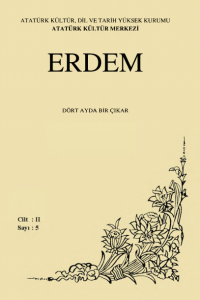RIBÂT-I MALIK, A MONUMENT ERECTED AT HARÇANG, BUHÂRÂ, BY THE HÂKÂNİD (HÂKÂNÎ TURK) MONARCH ÇU TIĞIN NAŞR II ŞAMSU’L-MULK, SON OF IBRÂHÎM
Abstract
References
- -
RIBÂT-I MALIK, A MONUMENT ERECTED AT HARÇANG, BUHÂRÂ, BY THE HÂKÂNİD (HÂKÂNÎ TURK) MONARCH ÇU TIĞIN NAŞR II ŞAMSU’L-MULK, SON OF IBRÂHÎM
Abstract
T h e lineage called, by their contemporaries, “ H âkânî T u rk” (Im perial Turk), or “ Turkish H âkâns” , or “ Sons o f Afrâsiyâb” , or “ Ilik-H ans” , the Kara-hanids o f modern history (840-1220), *** adhered to İslam around 926 and became, simultaneously, the founders o f the first majör Turkish Islamic State and o f its architecture. T heir written vakfiyyas (pious endowments) express their concern for the welfare o f their subjects, in whom they saw “ G od’s worshippers” confided to their care. Some members o f this dynasty, (reputed to have banished wine from their court), had achieved a saintly reputation. Such was Satuk Buğra who, won to İslam when yet a child, was instrumental in the conversion of large numbers o f Turks. 2 The devout tendency continued3 with ‘A lî’s sons, M anşûr, who, in 451/1024 foresook royal rank to become a derviş and Naşr Arslan îlik (died 402/1012) who, on the eve o f a battle where m any could have died, risked his own life and went unattended to the cam p of M ahm ûd o f G azna, to plead for peace.
Keywords
References
- -
Details
| Primary Language | English |
|---|---|
| Journal Section | Erdem |
| Authors | |
| Publication Date | May 1, 1986 |
| Published in Issue | Year 1986 Volume: 2 Issue: 5 |
ERDEM Journal is indexed by TR Dizin, MLA International Bibliography, EBSCOhost, SOBIAD, ASI (Advanced Science Index) ISAM, DAVET and AYK Journal Index.


